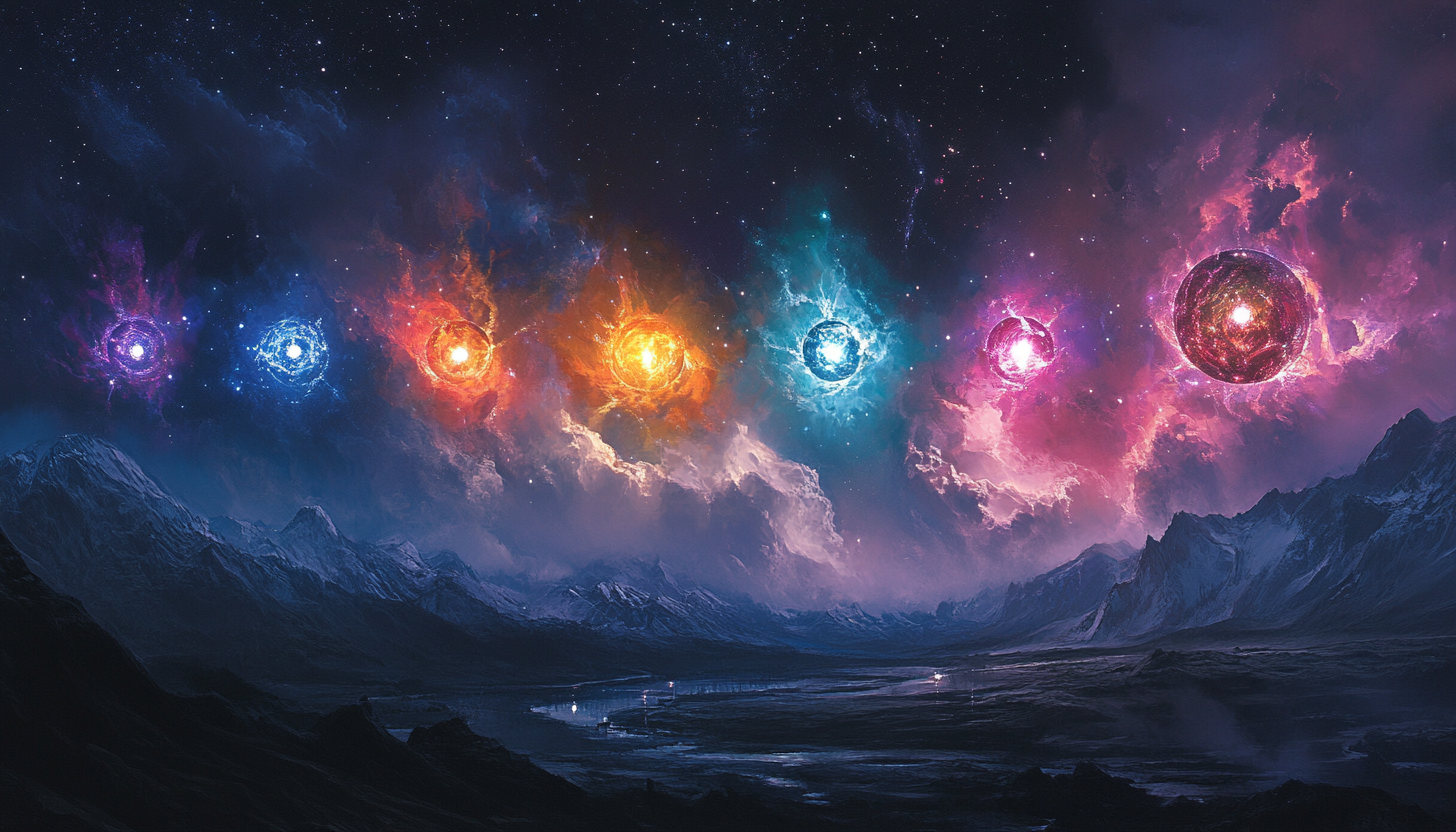The Seven Lords of Avarice
Legendary Conquerors
The Seven Lords of Avarice are widely regarded as one of the most catastrophic and enigmatic phenomena in the realm's history. Believed by scholars and myth-keepers alike to have been born of a catastrophic Guild Heart convergence, their arrival marks what many refer to as “The Great Sundering”—a cataclysmic event that altered the very progression of the world.
The Guild Heart Convergence
According to fragmented myth and ancient arcane records, the Seven Lords emerged when two Guild Hearts were activated in direct proximity, an act considered impossible or at the very least inadvisable by magical standards. The result was not merely a release of raw divine energy, but a tearing of planar boundaries, giving rise to seven immortal entities, each bearing incomprehensible power and a thirst for supremacy. The nature of this convergence remains poorly understood, but the most supported theory claims that the energy twisted fate itself—writing these seven figures into the realm’s fabric as apex beings, immune to the natural balance of growth and consequence.Nature and Appearance
The identities and forms of the Seven Lords of Avarice vary across cultures, with no unified record surviving from their era. Some texts describe them as humanoid dragons, embodiments of greed and destruction with wings that blotted out the sun and voices that shattered mountains. Others claim they were once mortals, twisted and exalted by the divine power of the Guild Hearts—godlike conquerors masquerading in human flesh. Despite these inconsistencies, nearly all accounts agree on core attributes:- Unstoppable Adaptability – They evolved during battle, learning, countering, and overpowering enemies with unnatural speed.
- Relentless Growth – Each Lord seemed to grow stronger simply by existing, as if the world itself yielded to their presence.
- Singular Will – Unlike typical rulers, they exhibited absolute control over both themselves and their subjects, never doubting, never failing.
Legacy of Destruction
The reign of the Seven Lords spanned an undetermined but profoundly destructive epoch. During this time, they are credited—or blamed—for:- The extinction of pure-blooded orcs, leaving only diluted lineages such as half-orcs to remain.
- The eradication of entire races and empires that refused to kneel:
- Locathah: aquatic folk whose empire once ruled vast undersea domains.
- Gith: planar wanderers and psychic warriors, shattered in mind and nation.
- Firbolgs: gentle forest giants who resisted the Lords' desecration of nature.
- Tieflings and Aasimar: celestial and infernal-blooded peoples caught in divine crossfire.
The Hero Logeto
One of the few names to survive from this age of annihilation is Logeto, a champion who rose from obscurity to stand against the Seven. Known in some cultures as "The Last Bastion", Logeto is said to have faced the Lords not out of power, but sheer will. He delayed their conquest long enough for scattered resistance to mobilize, and in some traditions, even wounded one of the Seven, a feat thought impossible. Though he ultimately perished, Logeto became a symbol of resistance, now venerated in scattered religions as a martyr or proto-saint. Shrines to him often exist in the ruins of cities the Seven Lords destroyed.Downfall: Avarice Consumes Itself
Despite their invincibility, the defining trait of the Seven Lords—avarice—proved their undoing. As each began to covet total control over the world and the remaining Guild Hearts, infighting erupted. This war among gods became known as the Greed War, a conflict of such magnitude it shattered mountains, drowned coastlines, and turned entire regions into lifeless wastelands. Eventually, all Seven vanished—destroyed, consumed, or simply collapsed under the weight of their own ambition. Whether they killed one another or were banished by forces unknown remains a matter of intense debate.Remnants and Modern Relevance
Though the Lords themselves are gone, their empire’s skeleton remains. Towering ruins and blackened foundations—many still enchanted—dot the western and Eastern continents. Some ancient highways, now overgrown and broken, were once arteries of their dominion. The only surviving structure linked directly to them is the mythical Shadegate: a half-floating, dungeon-fortress hybrid, said to have been their private sanctum. Enchanted to defy gravity and cloaked in illusions and wards, Shadegate is nearly inaccessible—surrounded by elemental storms, sentient terrain, and traps that reset with each failed expedition. No known expedition has returned with proof of entry, and some believe it is sentient—choosing when and to whom it opens.The Gaps in Legend
It is not uncommon for ancient texts to refer to certain figures simply as "The Sixth Lord" or "The Forgotten Tyrant", with no name, domain, or definitive traits attached. These Lords remain shrouded in mystery, and their identities are either lost to history or were never truly known—raising the possibility that some of the Seven may not have been singular figures at all, but aspects of a greater force, or even fabricated constructs used to explain the inexplicable devastation they left behind. Of the Seven, the following Lords have been identified through multiple semi-consistent sources and recorded relics:- The First Lord
- Haustro, The Second Lord
- The Third Lord
- Synadar, The Fourth Lord
- The Fifth Lord
- Meiora, The Sixth Lord
- The Seventh Lord
Date of Setting
Mythic Era (Estimated 100,000+ years ago)
Related Items



Comments